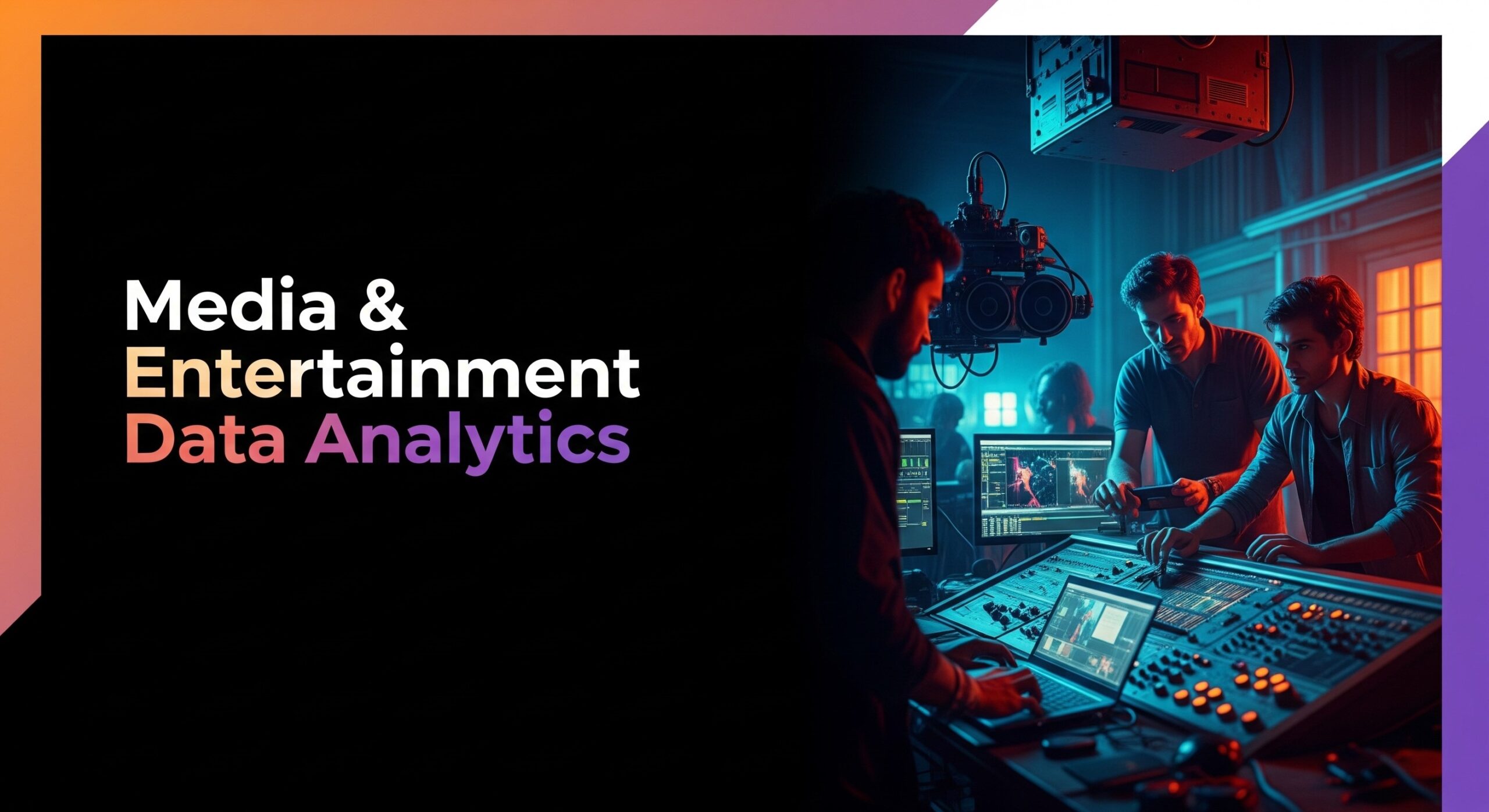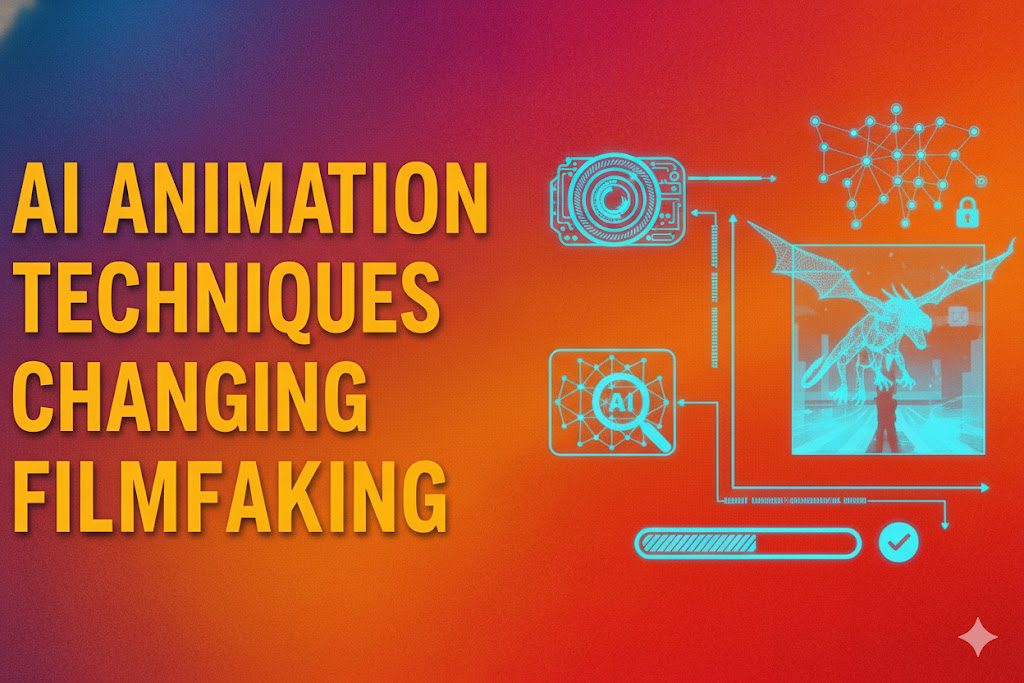Introduction
Are you tired of the guesswork in content strategy?
You greenlight a project with high hopes, pour in a massive budget, only to see it underperform.
It’s a huge problem in the media and entertainment industry. You’re not alone. The truth is, relying on gut feelings to make multi-million dollar decisions is no longer a sustainable strategy.
This is where M&E (Media & Entertainment) data analytics changes the game.
It’s not just about crunching numbers; it’s about making smarter, faster, and more profitable decisions. In this post, I’m going to walk you through the exact steps you can take to harness the power of data, reduce financial risk, and deliver content that truly resonates with your audience.
Table of content
- Introduction
- Key-Takeaways
- Step 1: Stop Guessing and Start Defining Your KPIs
- Step 2: Break Down Your Data Silos
- Step 3: Leverage Predictive Analytics to Forecast Hits
- Step 4: Dive Deep into Audience Behavior (Beyond Demographics)
- Step 5: Find the Right Analytics Partner to Accelerate Growth
- How Vitrina Powers Your Data Strategy
- Conclusion
- FAQs
Key Takeaways
| Key Takeaway | Actionable Insight |
|---|---|
| Define Your Goal | Pinpoint a specific business problem to solve, like audience churn or low content engagement. |
| Consolidate Your Data | Break down data silos by merging viewership, social, and operational data into one view. |
| Focus on Predictive Analytics | Use historical data to forecast content performance and potential market success before you invest heavily. |
| Analyze Audience Behavior | Go beyond simple demographics to understand *why* and *how* audiences engage with your content. |
| Measure and Iterate | Track key performance indicators (KPIs) post-launch and feed those insights back into your next project. |
Is your content strategy based on data or guesswork?

Step 1: Stop Guessing and Start Defining Your KPIs
Before you can analyze anything, you need to know what you’re trying to achieve. Sounds simple, right? But most companies skip this step. They collect mountains of data with no clear goal.
Don’t be one of them. Ask yourself: what is the single biggest problem I want data to solve right now?
- Is it reducing audience churn?
- Is it improving the ROI of my marketing spend?
- Is it identifying which scripts have the highest potential for success?
- Is it optimizing my global distribution strategy?
Once you have a clear goal, you can define the Key Performance Indicators (KPIs) that matter. For example, if your goal is reducing churn, your KPIs would be customer lifetime value (CLV), churn rate, and engagement over time. Focus on a handful of metrics that directly impact your goal.
Step 2: Break Down Your Data Silos
Your data is probably scattered everywhere. Viewership numbers are in one system, social media sentiment is in another, and production budgets are in a completely different spreadsheet. This is a huge roadblock. You can’t see the full picture if your data lives in separate, disconnected islands.
The goal is to create a single source of truth. You need to consolidate data from:
- Audience Platforms: Viewership data, streaming hours, completion rates.
- Social Media: Sentiment analysis, engagement metrics, trending topics.
- Marketing & Ads: Ad spend effectiveness, conversion rates, campaign ROI.
- Operational Systems: Production costs, distribution timelines, localization expenses.
Bringing this information together allows you to connect the dots. You might discover that a 10% increase in social media buzz for a certain genre correlates with a 5% drop in audience churn. That’s a powerful, actionable insight you’d miss with siloed data.
Step 3: Leverage Predictive Analytics to Forecast Hits
This is where M&E data analytics gets really exciting. Instead of just looking at what happened in the past, you can start predicting the future. Predictive analytics uses historical data and AI algorithms to forecast potential outcomes.
How can you use it?
Imagine being able to analyze a script and compare its core elements—like genre, character archetypes, and plot structure—against a database of thousands of past films and TV shows.
The system could then forecast its potential box office revenue or viewership numbers with a surprising degree of accuracy.
This isn’t science fiction. Major studios are already doing this to de-risk their investments. It helps them decide which projects to greenlight, how much to budget, and who to cast. It transforms content acquisition from a gamble into a data-informed business decision.
Ready to transform your content ROI?

Step 4: Dive Deep into Audience Behavior (Beyond Demographics)
Knowing your audience is 25-34 years old is surface-level information. True M&E data analytics goes deeper. It’s about understanding psychographics and behavior.
- What scenes do viewers re-watch or skip? This tells you what content is resonating and what isn’t.
- When do they stop watching a series? Pinpointing the exact episode where viewers drop off can reveal plot problems.
- What other content do fans of your show love? This helps with cross-promotion and developing new content they’re likely to enjoy.
This level of analysis allows for hyper-personalization. You can tailor marketing campaigns, recommend content with incredible accuracy, and even inform creative decisions in the writers’ room.
You stop making content for a vague demographic and start creating for specific audience communities.
Step 5: Find the Right Analytics Partner to Accelerate Growth
Let’s be honest. Building an in-house data analytics team with M&E-specific expertise is expensive and time-consuming. For most companies, the smarter move is to partner with a specialized vendor.
But finding the right partner is a challenge. You need a firm that not only understands data science but also deeply understands the nuances of the entertainment industry. The key is to look for vendors with a proven track record in:
- Content Valuation & Forecasting
- Audience Segmentation & Analysis
- Global Market Trend Analysis
- Marketing & Distribution Optimization
Finding these specialists can feel like searching for a needle in a haystack. This is where a dedicated industry marketplace becomes invaluable. Using a platform to discover and vet these partners saves you hundreds of hours of research and helps you find the perfect fit for your specific goals.
How Vitrina Powers Your Data Strategy
So, how do you find these expert M&E data analytics vendors?
This is the exact problem Vitrina was built to solve. Our platform is a global marketplace for the entire M&E supply chain.
Instead of spending months searching for a qualified data partner, you can use Vitrina to quickly discover, vet, and connect with top-tier analytics firms from around the world.
We provide the transparency and data you need to find the right vendor, so you can stop searching and start executing your data-driven strategy.
Conclusion
The days of relying purely on instinct are over. M&E (Media & Entertainment) data analytics is no longer a luxury—it’s a core competency for survival and growth.
By defining your goals, consolidating your data, leveraging predictive analytics, and understanding your audience on a deeper level, you can fundamentally change how you create and monetize content.
You don’t have to do it all at once. Start with one clear objective and build from there. The power to make smarter, data-backed decisions is within your reach.
What’s the first strategy you’re going to try? Let me know in the comments.
Ready to find the perfect data analytics partner to bring your content strategy to the next level? Stop the endless searching. Sign up for Vitrina and get access to a global marketplace of vetted M&E vendors today. Make your next big decision a data-driven one.
Frequently Asked Questions
The ROI can be massive. It comes from multiple areas: reduced production costs by avoiding flops, increased revenue through better content personalization and ad targeting, lower marketing spend with more effective campaigns, and higher customer lifetime value from reduced churn. Companies often see a multi-fold return on their analytics investment.
You don’t need a massive in-house team from day one. Many analytics firms offer project-based services or scalable solutions. The key is to start small: pick one clear goal (like analyzing audience data for your last film) and hire a specialized vendor for that specific task. The insights from that one project can often pay for the service itself.
Not at all. While streaming giants popularized it, M&E data analytics is crucial for film studios, production companies, broadcasters, and advertisers. It can be used to forecast box office success, optimize theatrical release windows, plan marketing campaigns, and even inform script development long before production begins.
No, it enhances it. Data provides the “what,” but human creativity provides the “why” and “how.” Analytics can tell you that audiences love sci-fi thrillers with strong female leads, but it takes a talented writer and director to turn that insight into a compelling story. Data should be seen as a powerful tool that empowers creative professionals to make more informed decisions.






































